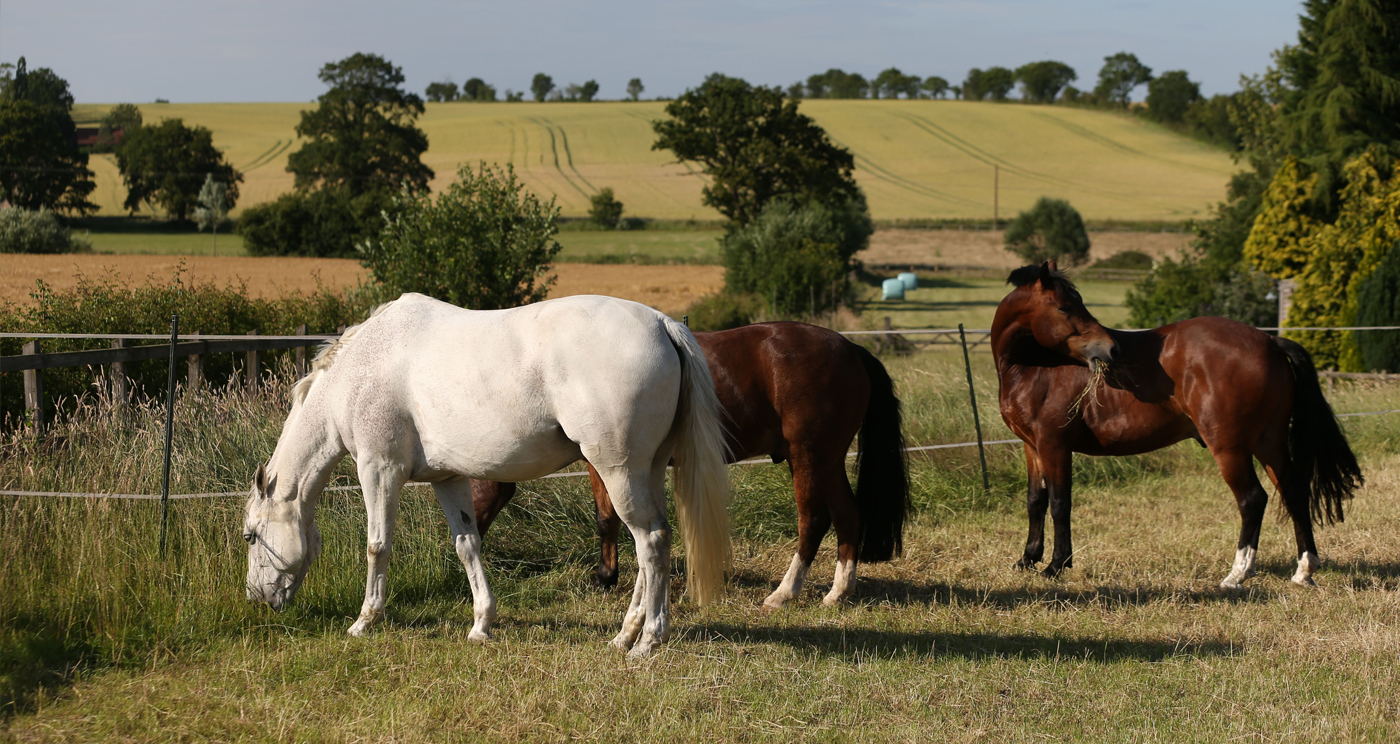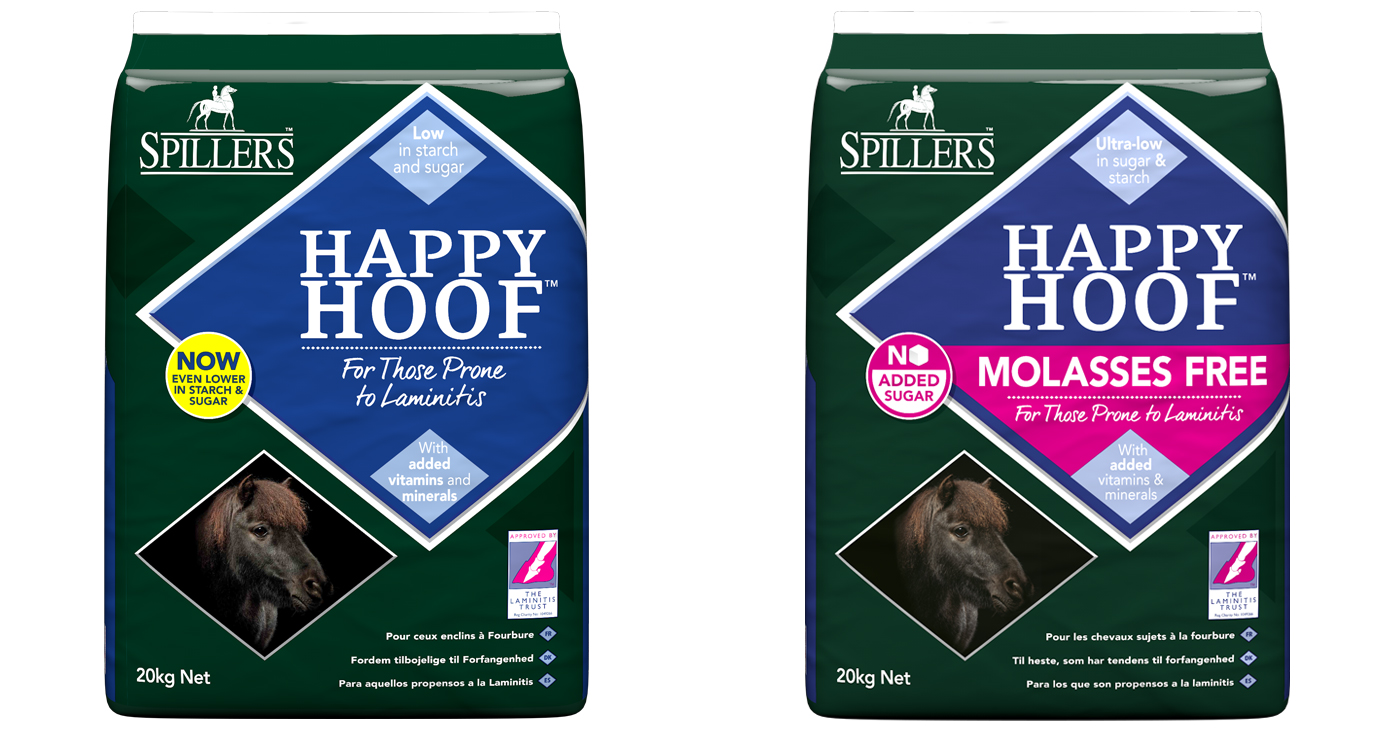Promotional Feature with Spillers
Nutritional management of laminitics centres around maintaining a healthy body condition score (BCS) and providing a diet low in starch and sugar including fructan, the ‘storage form’ of sugar in grass and other plants.
Here we bring you some practical tips on how to achieve this and help you keep your horse or pony safe this spring…
1. Restrict access to grazing: Grass may contain up to 15%* simple sugars 35%* water soluble carbohydrate (WSC = simple sugars + fructan). This means a 300kg pony turned out 24/7 could consume a staggering 2.3kg of simple sugars and 7.5kg of WSC from grass alone. Grass can also provide three times the daily energy (calorie) requirement for horses and ponies in light work! *dry matter
2. Keep them slim: Obesity and recent weight gain are known risk factors for laminitis so aim to maintain a BCS of 4.5-5 out of 9. Balancers are ideal for good doers providing vitamins, minerals and quality protein to balance a forage-based diet, alongside negligible levels of calories, starch and sugar.
3. Avoid over-rugging: Make the most of any chilly weather by allowing good doers to lose a few extra pounds by keeping warm as nature intended.
4. Reduced turnout may lead to ‘binge eating’: Reducing time at pasture may seem like a logical way to reduce grass intake, but our four-legged friends may soon become wise to your intentions! One study found that ponies consumed almost 1% of their bodyweight (dry matter) in only three hours at grass, despite being fed ad-lib hay for the rest of the day. For horses and ponies on a strict weight loss diet, this could equate to two-thirds of their total daily forage allowance!
5. Try using a grazing muzzle: Grazing muzzles have been shown to reduce intake by an average of 80% in ponies turned out for three hours and reduce the rate of weight gain (on average) when worn for 10 out of 23 hours at grass. However some horses and ponies may gain weight when only wearing a muzzle for part of their time at pasture so consider stabling or ‘non-grass’ turnout for the remainder of the day.
6. Consider turning out at night: Grass can’t photosynthesise (and therefore produce sugar) without sunlight and provided the soil temperature is consistently above 5°C, fructan (stored largely in the stem) will be used for growth, meaning WSC levels are likely to be at their lowest overnight. However when chilly nights prevent growth, WSC levels may still be high!
7. Beware of Jack Frost: Sunny, frosty mornings can lead to high levels of WSC in grass, presenting a hidden danger for laminitics.
8. Soaking pitfalls: Soaking hay helps to reduce WSC but results are highly variable and can’t guarantee suitability for laminitics. Also due to the loss of nutrients (and therefore dry matter), your haynet will contain less ‘hay’ and more water post-soaking. Unless feeding ad lib, increase the amount you soak by approximately 20%.
9. Consider an alternative forage source: For horses and ponies at very high risk, complete removal from grazing may be the only option. In these situations provision of a low WSC hay or suitable forage replacer is essential. Consider a low NSC (starch + WSC) hay replacer such as SPILLERS™ HAPPY HOOF™ or SPILLERS™ HAPPY HOOF™ Molasses-Free both of which are now even lower in starch and sugar and are approved by the Laminitis Trust.
10. Keep up the exercise: A recent study found that even small amounts of exercise may help to support a healthy metabolism, even if it doesn’t result in additional weight loss.
11. Make sure you can spot the signs: If your horse or pony does get laminitis, prompt action is essential. Not all horses and ponies adopt the classic ‘laminitic stance’ and in fact, if all four feet are affected they may stand normally. Signs of pain such as sweating and increased temperature, pulse and respiration rates may be mistaken for signs of colic. Other more subtle and potentially easily missed signs include reluctance to turn on a circle, lying down more and no longer coming over when you call them.
If you require any advice about feeding an overweight horse or pony or one prone to laminitis you can private message SPILLERS™ on Facebook, speak to a nutritionist on the phone by calling 01908 22 66 26 or emailing helpline.horsecareUK@effem.com







